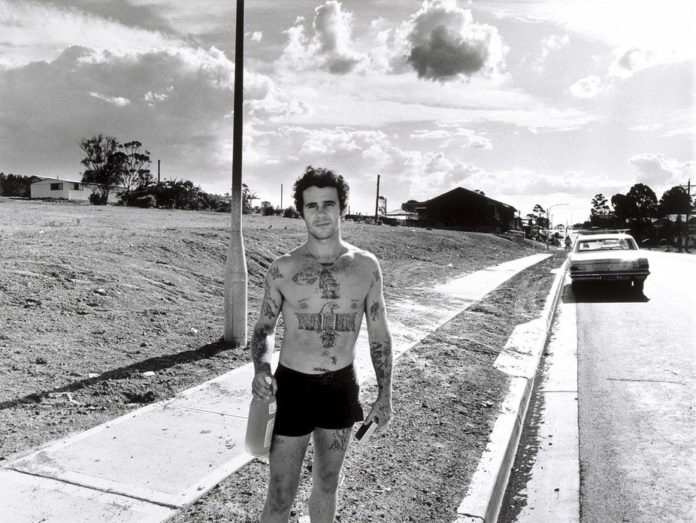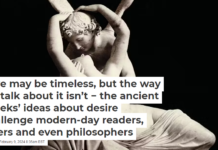

By Molly Glassey, The Conversation
Opening this week, Art Gallery NSW’s latest exhibition, Australian Vernacular Photography, explores the Australian photographic landscape of the late 20th century.
Hal Missingham, photographer and director of the gallery from 1945 to 1971, said in 1947:
In a country supposedly occupied by people indulging in a vigorous outdoor life, where are the [photographic] records of beach and sport … where are the photographs of the four millions of people who live and work in our cities? What are they like – what do they do – what do they wear, and think?
This proved to be a catalyst in the creation of an Australia photography landscape – a vernacular of sorts that this exhibition lets viewers define.
Eleanor Weber, the exhibition’s co-curator, said the collection was not trying to pin down exactly what “vernacular” might be.
“I guess we’re just trying to think about the particular way Australian photographers in the second part of 20th century treated Australian subjects or landscapes or scenes and, in so doing, actually put forward an idea of Australian photography.”
Sixteen Australian photographers including David Moore, Robert McFarlane and Sue Ford are represented by some 27 photographs taken from the 1960s to the 2000s.
The Family of Man

Trent Parke Backyard swing set, QLD, 2003, from the series Minutes to midnight type C photograph, 109.9x164cm.
Gift of Albie Thoms in memory of Linda Slutzkin, former Head of Public Programmes, Art Gallery of New South Wales 2006 © Trent Parke
In 1959, Edward Steichen’s photography exhibit The Family of Man travelled to Australia from New York’s Museum of Modern Art.
According to Weber: “It was essentially the introduction of international photography of a specific nation’s vernacular to Australian audiences in material form.”
It was a turning point, that saw photography in Australia change with each decade that followed – the 1960s saw greater access to photographic technology, courses and collection institutions emerged in the 1970s, and the 1980s, 1990s and 2000s saw a more critical approach to the art.
“It wasn’t idealising, or trying to create an idea what an ‘Australian photograph’ might be – but rather, starting to photograph what was actually there – the reality,” said Weber.

Fiona Hall Bondi Beach, Sydney, Australia, October 1975 gelatin silver photograph, 28.2×27.9cm.
Hallmark Cards Australian Photography Collection Fund 1987 © Fiona Hall
The frank and unflattering
The frank, and sometimes unflattering, images on show provide a stark and realistic scope of Australia amidst changing social times and awareness.

John F Williams The Rocks, Sydney 1973 gelatin silver photograph, 22.6×34.1cm.
Purchased 1989
© John F Williams
“There’s this photo of these guys at The Rocks (see above image), just drinking beer – not particularly looking at the camera, and that’s from the early 70s, by John Williams – he’s very much into his street photography,” said Weber.
Another piece in the exhibition, Blacktown Man by Gerrit Fokkema (feature image), was taken 10 years later, and provides a very different contribution to the vernacular.
“I think that shows an interesting shift. The fact he’s looking at the camera shows he’s obviously very aware. And it’s this whole desolate, and benign, suburban scene, and the particular light that is very Australian – these types of threads that would go towards creating a vernacular.”

Anne Zahalka said in 1995: ‘I am primarily concerned with … representations to do with place, identity and culture. Through the appropriation and reworking of familiar icons and styles I seek to question (and understand) their influence, meaning and value.’ Twelve years later, Zahalka continues this line of inquiry with the series Scenes from the Shire. In this image, three Muslim girls wearing Burqinis (swimwear made for Muslim women conceived by Lebanese-Australian designer Aheda Zanetti) are standing cross-armed on Cronulla beach, a lifesaving raft is in the background. Zahalka made this work in response to the Cronulla riots of 2005. The image juxtaposes Muslim tradition with the Australian icon of the lifesaver, suggesting cultural overlap and changing national identity.
Gift of the artist 2011. Donated through the Australian Government’s Cultural Gifts Program © Anne Zahalka
The Artists
Associate Professor of Art History and Art Education at the University of New South Wales Joanna Mendelssohn said she was surprised by the selection of works in the exhibition.

Sue Ford’s photograph of her friend Sue Pike blow-drying her hair in the kitchen captures the young woman preparing for a night out. Ford often photographed those close to her as well as continually making self-portraits throughout her career. The photograph is domestic and intimate, showing a common aspect of life for young women in the 1960s. It suggests the procedure of preening necessary to go out and find ‘marriage and children’, while the alcohol and cigarette indicates the emerging movement for women’s liberation.
Gift of Tim Storrier 1989
© Estate of Sue Ford
“I’m surprised not to see any work by Sandy Edwards in the exhibition. As much as I admire Fiona Hall and Anne Zahalka, ‘vernacular’ isn’t the term that comes to mind when I think of their work. Both are well known as mistresses of the staged composition.”
“I’m also surprised not to see any pictures by Mervyn Bishop, Ricky Maynard, Brenda L.Croft or Peter Yanada McKenzie. Not having a single Indigenous photographer in an exhibition called ‘vernacular’ is notable. It looks like a very skewed exhibition indeed.”
Australian Vernacular Photography runs February 8 to May 18 at the Art Gallery NSW. Full details of the exhibition can be found here.
![]()
This article was originally published on The Conversation.
Read the original article.



















